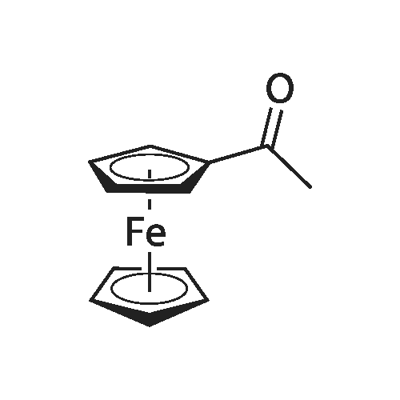Pirenzepine
- CAS NO.:28797-61-7
- Empirical Formula: C19H21N5O2
- Molecular Weight: 351.4
- MDL number: MFCD00242717
- EINECS: 249-228-4
- SAFETY DATA SHEET (SDS)
- Update Date: 2024-10-28 16:48:35

What is Pirenzepine?
Description
Pirenzepine is available as dihydrochloride monohydrate, soluble in water. Because of its unfavorable balance between weak antisecretory and frequent anticholinergic adverse effects (dry mouth, blurred vision), pirenzepine is considered obsolete .
Chemical properties
solid
Originator
Microsules Bernabo, Microsules Bernabo
The Uses of Pirenzepine
Pirenzepine, is an M1 selective antagonist, that is used in the treatment of peptic ulcers, as it reduces gastric acid secretion and reduces muscle spasm.
The Uses of Pirenzepine
antifungal
Background
An antimuscarinic agent that inhibits gastric secretion at lower doses than are required to affect gastrointestinal motility, salivary, central nervous system, cardiovascular, ocular, and urinary function. It promotes the healing of duodenal ulcers and due to its cytoprotective action is beneficial in the prevention of duodenal ulcer recurrence. It also potentiates the effect of other antiulcer agents such as cimetidine and ranitidine. It is generally well tolerated by patients.
Indications
For the treatment of peptic ulcer, gastric ulcer, and duodenal ulcer.
Definition
ChEBI: Pirenzepine is a pyridobenzodiazepine. It has a role as an anti-ulcer drug, a muscarinic antagonist and an antispasmodic drug.
Manufacturing Process
48.4 g of 5,11-dihydro-6H-pyrido[2,3-b][1,4]benzo-diazepin-6-one were refluxed in 900 ml of absolute dioxane for 15 minutes. Thereafter, over a period of 45 minutes, 28 ml of chloroacetyl chloride and 52 ml of triethylamine were simultaneously added dropwise to the mixture. The mixture was refluxed for eight hours and then vacuum-filtered after having cooled. The filtrate was evaporated in vacuum. The crystalline residue was recrystallized from acetonitrile in the presence of activated charcoal. MP: 212°-213°C (with decomposition). Yield: 85% of theory.
A mixture of 67.5 g of 11-chloroacetyl-5,11-dihydro-6H-pyrido[2,3b][1,4]benzodiazepin-6-one, 183 ml of N-methylpiperazine and 1.37 liters of absolute benzene was refluxed for 18 hours. Thereafter, the crystalline precipitate was vacuum filtered off, dissolved in aqueous 20% hydrochloric acid, the solution was evaporated in vacuum, the crystalline residue wasdissolved in 250 ml of water while heating, the solution was admixed with 150 ml of isopropanol and active charcoal, filtered, and 2.5 liters of isopropanol were added to the filtrate. After cooling, the precipitate was vacuum filtered off, yielding 70% of theory of the 5,11-dihydro-11-[(4'-methyl-1'-piperazinyl)acetyl]-6H-pyrido[2,3-b][1,4]benzodiazepin-6-one dihydrochloride, M.P. 257259°C (decomp.).
The free base of pirenzepine, obtained from the dihydrochloride by making an aqueous solution thereof alkaline with dilute sodium hydroxide and extracting it with chloroform, had MP: 226°-228°C after recrystallization from methanol/ether.
Therapeutic Function
Antiulcer, Antiemetic
Biological Activity
M 1 muscarinic receptor selective antagonist. Inverse agonist activity reported.
Pharmacokinetics
Pirenzepine belongs to a group of medications called antispasmodics/anticholinergics. These medications are used to relieve cramps or spasms of the stomach, intestines, and bladder. Pirenzepine is used to treat duodenal or stomach ulcers or intestine problems. It can be used together with antacids or other medicine in the treatment of peptic ulcer. It may also be used to prevent nausea, vomiting, and motion sickness.
Enzyme inhibitor
This hygroscopic antiulcerative (FWfree-base = 351.41 g/mol; CAS 28797-61- 7) is a gastric acid inhibitor and selective M1 muscarinic receptor antagonist, and the antisecretory properties of pirenzepine on gastric acid and pepsin secretion may be attributed to this antagonistic activity on muscarinic M1 receptors.
Metabolism
Not Available
Properties of Pirenzepine
| Boiling point: | 541.7±50.0 °C(Predicted) |
| Density | 1.271±0.06 g/cm3(Predicted) |
| storage temp. | Store at RT |
| solubility | soluble in No data available |
| pka | 11.29±0.20(Predicted) |
Safety information for Pirenzepine
Computed Descriptors for Pirenzepine
New Products
(S)-3-Aminobutanenitrile hydrochloride 4-Methylphenylacetic acid N-Boc-D-alaninol N-BOC-D/L-ALANINOL Tert-butyl bis(2-chloroethyl)carbamate 3-Morpholino-1-(4-nitrophenyl)-5,6-dihydropyridin- 2(1H)-one Furan-2,5-Dicarboxylic Acid Tropic acid 1-Bromo-3,5-Di-Tert-Butylbenzene S-2-CHLORO PROPIONIC ACID ETHYL ISOCYANOACETATE 2-Bromo-1,3-Bis(Dimethylamino)Trimethinium Hexafluorophosphate 4-IODO BENZOIC ACID 3-NITRO-2-METHYL ANILINE 1-(2,4-DICHLOROPHENYL) ETHANAMINE (2-Hydroxyphenyl)acetonitrile 4-Bromopyrazole 2-(Cyanocyclohexyl)acetic acid 4-methoxy-3,5-dinitropyridine 1-(4-(aminomethyl)benzyl)urea hydrochloride 2-aminopropyl benzoate hydrochloride diethyl 2-(2-((tertbutoxycarbonyl)amino) ethyl)malonate tert-butyl 4- (ureidomethyl)benzylcarbamate Ethyl-2-chloro((4-methoxyphenyl)hydrazono)acetateRelated products of tetrahydrofuran







![PIRENZEPINE, [N-METHYL-3H]-](https://img.chemicalbook.in/StructureFile/ChemBookStructure2/GIF/CB4356143.gif)
You may like
-
 2033-24-1 98%View Details
2033-24-1 98%View Details
2033-24-1 -
 42831-50-5 5-METHYLISOXAZOLE-4-CARBOXYLIC ACID 98%View Details
42831-50-5 5-METHYLISOXAZOLE-4-CARBOXYLIC ACID 98%View Details
42831-50-5 -
 1975-50-4 98%View Details
1975-50-4 98%View Details
1975-50-4 -
 2-HYDROXY BENZYL ALCOHOL 98%View Details
2-HYDROXY BENZYL ALCOHOL 98%View Details
90-01-7 -
 2-Chloro-1,3-Bis(Dimethylamino)Trimethinium Hexafluorophosphate 221615-75-4 98%View Details
2-Chloro-1,3-Bis(Dimethylamino)Trimethinium Hexafluorophosphate 221615-75-4 98%View Details
221615-75-4 -
 61397-56-6 CIS BROMO BENZOATE 98%View Details
61397-56-6 CIS BROMO BENZOATE 98%View Details
61397-56-6 -
 14714-50-2 (2-Hydroxyphenyl)acetonitrile 98+View Details
14714-50-2 (2-Hydroxyphenyl)acetonitrile 98+View Details
14714-50-2 -
 118753-70-1 98+View Details
118753-70-1 98+View Details
118753-70-1